As an avid outdoorsperson and conservationist, I am thrilled to share my expertise on selecting campsites for minimal impact. Camping is a fantastic way to connect with nature, but it’s important to consider our environmental impact while enjoying the great outdoors. By choosing campsites with care and adopting eco-friendly practices, we can preserve the beauty of these natural spaces for future generations.
In this blog post, I will guide you through the process of selecting campsites that have minimal impact on the environment. We will explore the importance of Leave No Trace principles, consider factors such as location and amenities, and discuss responsible camping practices. By following these tips, you can enjoy your camping adventure while minimizing your ecological footprint.
So, grab your backpack, put on your hiking boots, and embark on a journey to discover the beauty of eco-friendly camping and the art of selecting campsites for minimal impact.

Why Eco-Friendly Camping is Important
When it comes to camping, many of us are drawn to nature’s beautiful landscapes and tranquility. However, it is essential to remember that our actions can significantly impact the environment. That’s why eco-friendly camping is becoming increasingly important. By practicing environmentally conscious habits, we can preserve the natural beauty of our camping destinations for generations to come. Here are a few reasons why eco-friendly camping is crucial:
Preserve the ecosystem:
When we choose to camp in an eco-friendly manner, we minimize our impact on the ecosystem. By following Leave No Trace principles and respecting wildlife and natural resources, we help ensure that the delicate balance of nature remains undisturbed. By leaving campsites as we found them and avoiding activities that harm the environment, we contribute to preserving flora and fauna.
Protect water sources:
Campers often rely on nearby water sources for drinking, cooking, and cleaning. It’s essential to take precautions to protect these water sources from pollution. Using biodegradable soaps and detergents and disposing of waste properly are simple steps that can make a significant difference in maintaining the cleanliness and quality of water sources.
Reduce carbon footprint:
Camping allows us to reconnect with nature, but it’s essential to consider how our means of getting to the campsite impacts the environment. Opting for greener transportation options such as carpooling or cycling reduces our carbon footprint and adds to the adventure and camaraderie of the camping experience.
Teach environmental stewardship:
Choosing eco-friendly camping practices is essential not only for the present but also for future generations. By setting an example and teaching others about preserving the environment, we instill a sense of environmental stewardship in our friends, family, and fellow campers. Together, we can create a ripple effect of positive change and encourage others to adopt sustainable practices.
Support local communities:
Eco-friendly camping often involves selecting campsites that support local communities and businesses. By staying at these establishments, we contribute to the local economy, encouraging sustainable practices within the community. It’s a win-win situation where we enjoy our camping experience while positively impacting the local environment.
In conclusion, practicing eco-friendly camping is vital to minimizing our environmental impact and preserving our camping destinations’ natural beauty. By choosing sustainable practices, we can protect ecosystems, safeguard water sources, reduce our carbon footprint, teach environmental stewardship, and support local communities. Together, let’s make a difference and ensure that future generations can enjoy the wonders of nature just as we do today.
Tips for Selecting Eco-Friendly Campsites
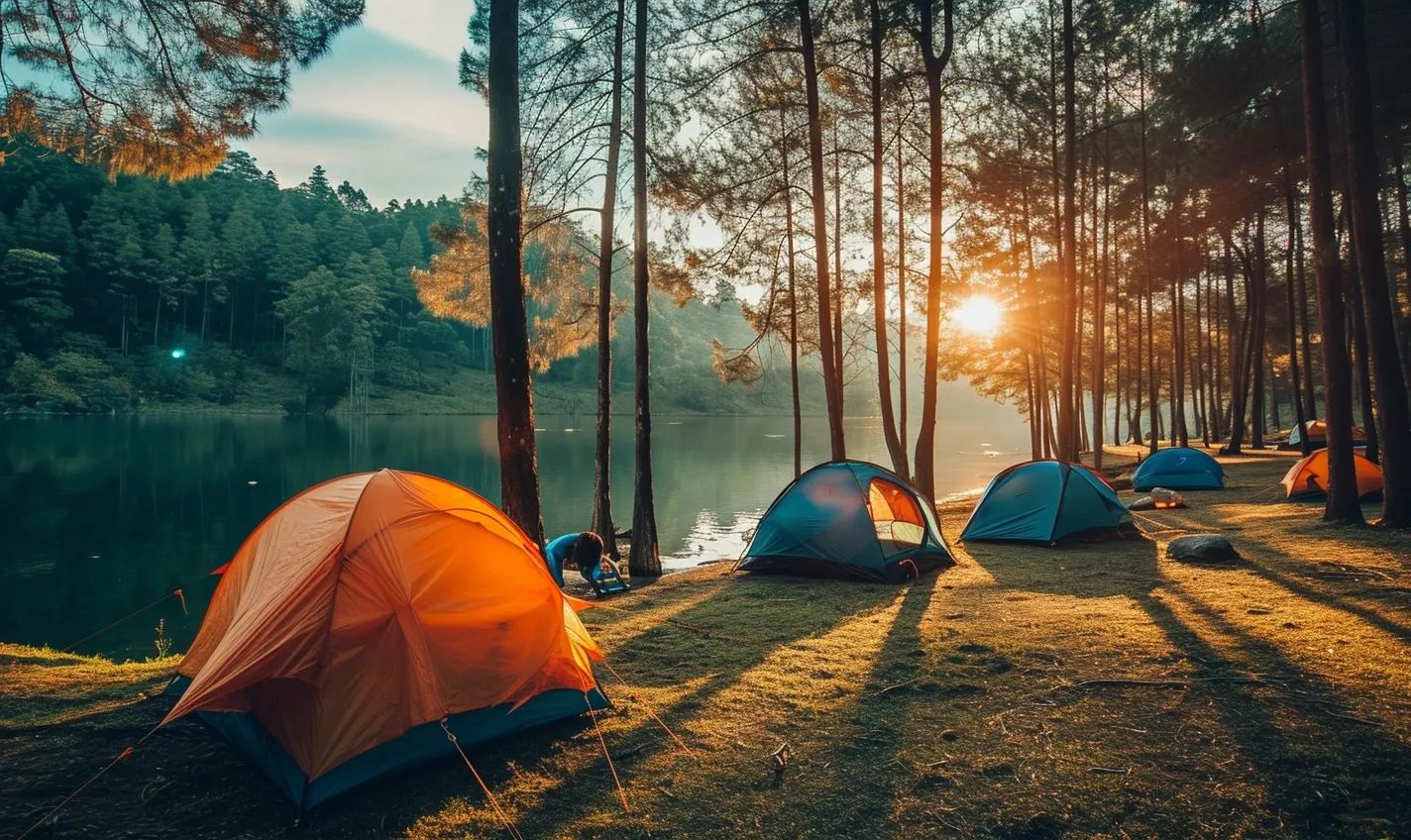
Regarding camping, immersing yourself in nature is one of the greatest joys. However, it is essential to ensure that we minimize our impact on the environment while enjoying these outdoor adventures. By selecting eco-friendly campsites, we can actively contribute to preserving the beauty of our natural surroundings. Here are a few tips to help you choose eco-friendly campsites:
Researching Campgrounds and Parks
Before your camping trip, take the time to research different campgrounds and parks in the area. Look for campsites that prioritize sustainability and eco-friendly practices. Check if they have any certifications or affiliations with environmental organizations. By choosing these campsites, you support their commitment to protecting the environment.
Considering the Environmental Impact
Consider the environmental impact of the campsites you are considering. Look for indicators that they prioritize practices such as recycling, waste management, and energy conservation. Choosing a campsite that values these principles will minimize your environmental footprint.
Avoiding Overcrowded Campsites
While popular campsites may seem appealing, choosing crowded locations can significantly strain the local ecosystem. The high volume of campers can result in habitat degradation and increased waste. Opt for campsites that are off the beaten path and less crowded. This way, you can enjoy a more tranquil and environmentally sustainable camping experience.
Respecting Wildlife and Natural Resources
When selecting a campsite, consider how it impacts the local flora and fauna. Look for campsites with well-defined trails and designated areas to minimize damage to the natural environment. Avoid disturbing wildlife, and follow any guidelines provided by park authorities.
Leave No Trace Principles
Choose campsites that promote and practice the Leave No Trace principles. These principles emphasize leaving the campsite just as you found it, minimizing waste, and respecting the natural environment. Campsites that encourage these principles prioritize the preservation of nature, making them excellent choices for eco-friendly camping.
By following these tips, you can contribute to eco-friendly camping and help preserve the beauty of our natural world. Remember, every little effort makes a difference, and by selecting eco-friendly campsites, we can enjoy outdoor adventures while minimizing our environmental impact.
Researching Campgrounds and Parks

When planning a camping trip, one of the first steps is to research campgrounds and parks that align with your eco-friendly camping goals. By selecting the right location, you can minimize your environmental impact and have a more enjoyable camping experience. Here are some tips to help you find the perfect campsite:
Consider the Environmental Impact
Before choosing a campground or park, consider its environmental impact. Look for those that prioritize sustainability and have implemented eco-friendly practices. These may include recycling programs, energy-efficient facilities, and low-impact camping rules. By supporting such campgrounds, you contribute to the preservation of natural resources and create a positive impact on the environment.
Additionally, some campgrounds offer educational programs or guided hikes that focus on conservation and environmental stewardship. These opportunities enrich your camping experience and provide valuable knowledge about local ecosystems.
Check for Overcrowding
No one enjoys camping in crowded campsites. It’s noisy and less peaceful and puts more strain on the environment. Overcrowding can result in more litter, increased soil erosion, and disturbance to wildlife habitats.
Before making a reservation, check how exclusive the campground is and its capacity limits. Look for reviews from fellow campers to understand how crowded it might be when you plan to visit. Choosing a less crowded campground allows you to enjoy a more serene camping experience while minimizing environmental impact.
Consider Wildlife and Natural Resources
When choosing a campsite, consider its proximity to wildlife habitats and natural resources. Avoid camping too close to sensitive areas such as nesting sites or water sources to minimize disturbance to wildlife.
Some campgrounds and parks have designated areas to protect sensitive habitats. These areas may have restrictions on camping, hiking, or other activities. By respecting these regulations, you contribute to the conservation efforts and help preserve the natural beauty of the area you’re visiting.
Remember, eco-friendly camping is all about enjoying nature responsibly and minimizing your impact. By researching and selecting the proper campgrounds and parks that prioritize sustainability, you can have a more environmentally conscious camping experience. So, take the time to do your homework and choose a campground that aligns with your eco-friendly values.
Considering the Environmental Impact

As an eco-conscious camper, it’s essential to think about the environmental impact of your outdoor adventures. By making thoughtful choices and adopting sustainable practices, you can ensure that your camping experience is eco-friendly and leaves minimal environmental impact.
Leave No Trace Principles
One of the fundamental ways to minimize your impact is by following the Leave No Trace principles. These guidelines emphasize responsible outdoor practices such as packing out your trash, leaving natural resources untouched, and respecting wildlife. By adhering to these principles, you can help preserve your chosen campsite’s natural beauty and ecological balance.
Avoiding Overcrowded Campsites
When selecting a campsite, consider choosing one that is less crowded. Popular camping areas can quickly become overwhelmed by visitors, resulting in increased waste, noise, and damage to the surroundings. Opting for a quieter location provides a more tranquil camping experience and helps protect fragile ecosystems from the strain of heavy foot traffic.
Respecting Wildlife and Natural Resources
Respecting the wildlife and natural resources you encounter while camping is crucial. Refrain from feeding or approaching animals, as it disrupts their natural behavior and can harm their health. Additionally, avoid damaging trees and plants by not carving into them or breaking off branches. By treating the natural environment with care and respect, you can help preserve it for future generations of campers to enjoy.
Use Eco-Friendly Camping Gear and Supplies
Choosing eco-friendly camping gear and supplies can significantly reduce your environmental impact. Look for products made from sustainable materials, such as biodegradable toiletries, reusable water bottles, and solar-powered camping lanterns. Opting for these eco-conscious alternatives promotes a more sustainable camping experience and reduces waste that might otherwise end up in landfills.
In summary, selecting campsites with minimal impact and considering the environmental consequences of our actions is crucial for eco-friendly camping. By following the Leave No Trace principles, avoiding overcrowded campsites, respecting wildlife and natural resources, and using eco-friendly gear, we can enjoy the great outdoors while preserving its beauty for future generations. Let’s strive to be responsible campers and leave the wilderness untouched!
Avoiding Overcrowded Campsites
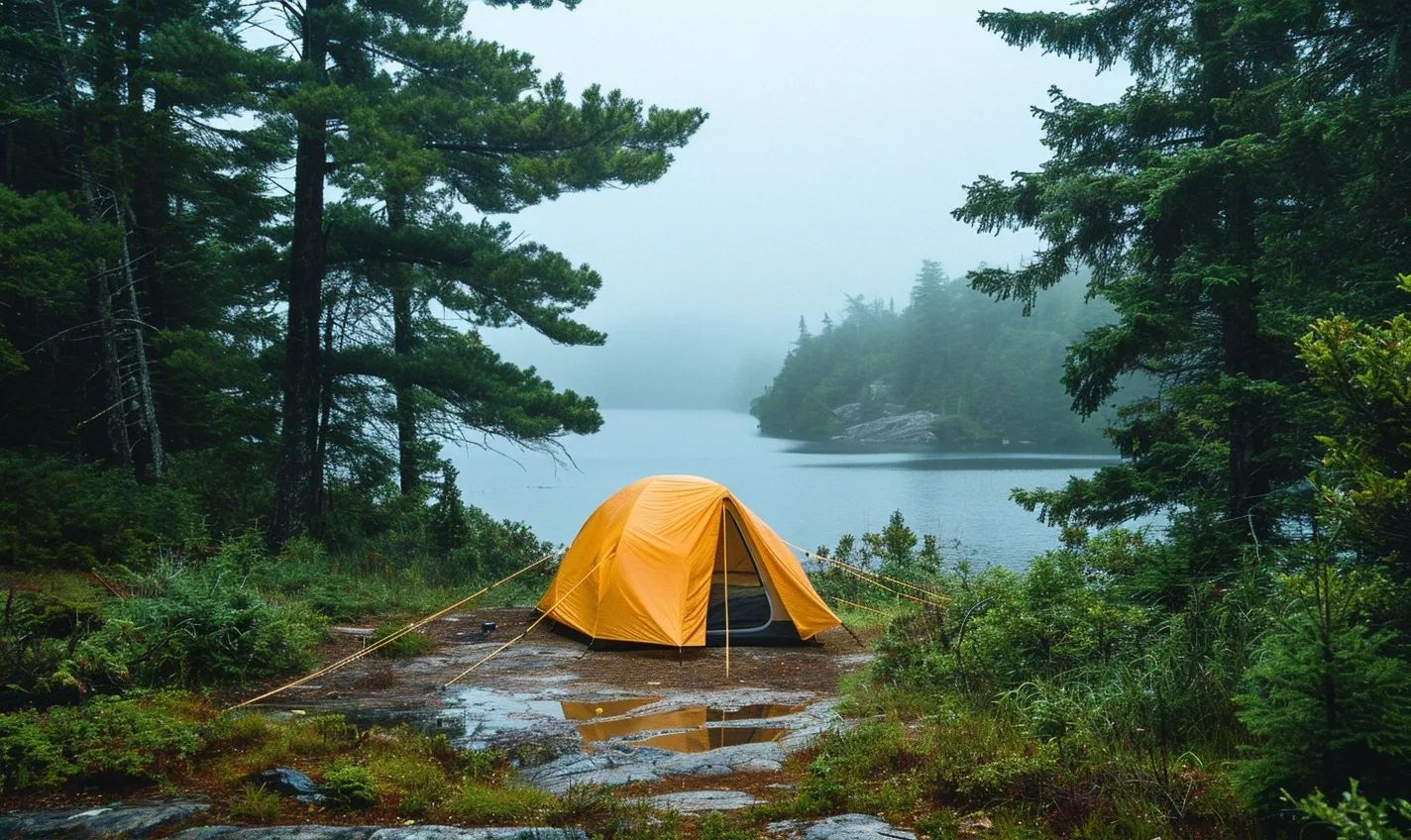
One of the joys of camping is getting away from the hustle and bustle of daily life and finding tranquility in nature. However, nothing can dampen the spirit of adventure like arriving at a campsite only to find it packed with other campers. To truly enjoy an eco-friendly camping experience, learning how to avoid overcrowded campsites is essential. Here are some tips to help you find your slice of wilderness:
Plan Your Trip in Advance
Researching and planning your trip well in advance can significantly increase your chances of finding a less crowded campsite. Start by selecting a less popular time of year or consider weekdays instead of weekends. This will dramatically reduce the number of fellow campers vying for the same campsites.
Explore Less Popular Areas
If you can travel further, consider exploring less popular camping areas. National parks and well-known camping spots tend to attract larger crowds. Look for hidden gems, such as state parks or more minor, lesser-known campgrounds that offer a more secluded experience.
Use Online Resources
Take advantage of online resources that allow you to check campground availability and make reservations in advance. Popular camping websites often have reviews and ratings that can help you gauge how busy a particular campsite might be. Use this information to choose campsites with a lower likelihood of overcrowding.
Arrive Early or Late
To secure a quieter camping experience, plan to arrive at your chosen campground early in the day or later in the evening. Many campsites operate on a first-come, first-served basis, so arriving early will give you a better chance of securing a spot. Alternatively, arriving later in the day may allow you to snag a campsite as others are packing up and leaving.
Explore Off-Season Camping
If you’re willing to brave the elements, consider exploring off-season camping. Many campgrounds remain open year-round, and camping during the off-season means fewer people and a more peaceful natural experience. Just be sure to pack accordingly and be prepared for changing weather conditions.
Finding a campsite with fewer crowds not only enhances your camping experience but also contributes to minimizing your impact on the environment. By spreading out and avoiding overcrowded areas, you can help protect the delicate ecosystems and wildlife that inhabit these spaces.
Remember, the key to a successful eco-friendly camping trip is to plan, explore lesser-known areas, utilize online resources, and be flexible with your camping schedule. By following these tips, you can enjoy the tranquility of nature while minimizing your impact and leaving only footprints behind.
Respecting Wildlife and Natural Resources
Protecting the Environment while Camping
When enjoying the great outdoors, it’s crucial to remember that we are just visitors to the natural world. Respecting wildlife and natural resources is essential for maintaining the delicate balance of ecosystems. Following a few simple guidelines can minimize your environmental impact and ensure that future generations can enjoy nature just as you do.
Leave No Trace Principles
The Leave No Trace principles are a set of guidelines designed to help outdoor enthusiasts practice responsible and sustainable camping:
- Plan and prepare.
- Travel and camp on durable surfaces.
- Dispose of waste properly.
- Leave what you find.
- Minimize campfire impacts.
- Respect wildlife.
- Be considerate of other visitors.
By following these principles, you can minimize your impact on the environment and leave the wilderness as you found it.
Minimizing Disturbance to Wildlife
While observing wildlife can be an incredible experience, it’s essential to do so from a distance to avoid disturbing their natural behaviors. Keep in mind the following tips:
- Use binoculars or a zoom lens to observe animals without getting too close.
- Do not feed or approach animals under any circumstances.
- Stay on designated trails and respect signs that indicate wildlife habitats or nesting areas.
- Ensure that all garbage, food scraps, and leftovers are correctly stored and disposed of to prevent attracting wildlife.
Preserving Natural Resources
Conserving natural resources is critical to maintaining the beauty and integrity of camping areas. Some practices to adopt include:
- Use eco-friendly camping gear and supplies, such as biodegradable soap and reusable water bottles.
- Minimize water usage by using water-saving techniques such as collecting and filtering rainwater.
- Use natural firewood instead of bringing in firewood from outside the area to prevent the spread of invasive species.
- Respect any restrictions on fishing, hunting, or gathering plants set by authorities to protect the local ecosystem.
By practicing these eco-friendly measures, you minimize your impact on the environment and contribute to the preservation of natural resources for future generations of campers.
Remember, it is our responsibility to protect and conserve wildlife and natural resources. By following these principles and guidelines, we can all play a part in enjoying the great outdoors while keeping it intact for future generations.
Leave No Trace Principles
Now that we’ve covered the importance of eco-friendly camping and tips for selecting campsites with minimal impact, it’s crucial to delve into the Leave No Trace (LNT) principles. These principles provide guidelines for outdoor enthusiasts to minimize their environmental impact and preserve the natural beauty for future generations. Let’s explore these principles and how to incorporate them into your camping trips.
Plan and Prepare
Before heading to the campsite, take the time to plan and prepare for your trip. Research the regulations and guidelines of the area you’re visiting. Familiarize yourself with the local flora, fauna, and weather conditions. This knowledge will help you make informed decisions and reduce the environmental impact.
Travel and Camp on Durable Surfaces
When setting up your campsite, choose a designated area with a durable surface, such as established campsites with compacted soil. Avoid trampling on fragile vegetation or creating new paths. By doing so, you minimize disruption to the natural ecosystem.
Dispose of Waste Properly
One of the fundamental principles of eco-friendly camping is to leave no trace behind. Carry biodegradable bags to pack out all trash and dispose of it properly. Leave the campsite cleaner than you found, and consider composting food waste to reduce your impact further.
Leave What You Find
While taking home a beautiful rock or a unique piece of nature may be tempting, leaving natural objects as you find them is essential. By doing so, you contribute to the preservation of the ecosystem and respect the area’s natural beauty.
Minimize Campfire Impacts
Campfires can be an enjoyable part of the camping experience but can also harm the environment if not properly managed. Follow local regulations, use established fire rings, and only burn small, dead wood. Ensure you fully extinguish the fire before leaving the campsite.
Respect Wildlife
Observe wildlife from a distance and avoid approaching or feeding them. Do not disturb nesting sites or dens; keep your food securely stored to prevent attracting animals. Remember, we are merely guests in their natural habitat, and respecting their space and well-being is crucial.
Be Considerate of Other Visitors
In crowded campsites, it’s essential to be considerate of other visitors. Keep noise levels low, respect quiet hours, and be mindful of others’ privacy. By practicing good camping etiquette, we can all enjoy the serenity of nature without inconveniencing or disturbing fellow campers.
Incorporating these Leave No Trace principles into your camping trips allows you to enjoy the great outdoors while minimizing environmental impact. By practicing eco-friendly camping, you contribute to preserving natural resources and ensure that future generations can enjoy these beautiful spaces. Take the time to educate yourself and your fellow campers about these principles, and together, let’s leave nature better than we found it.
Eco-Friendly Camping Gear and Supplies
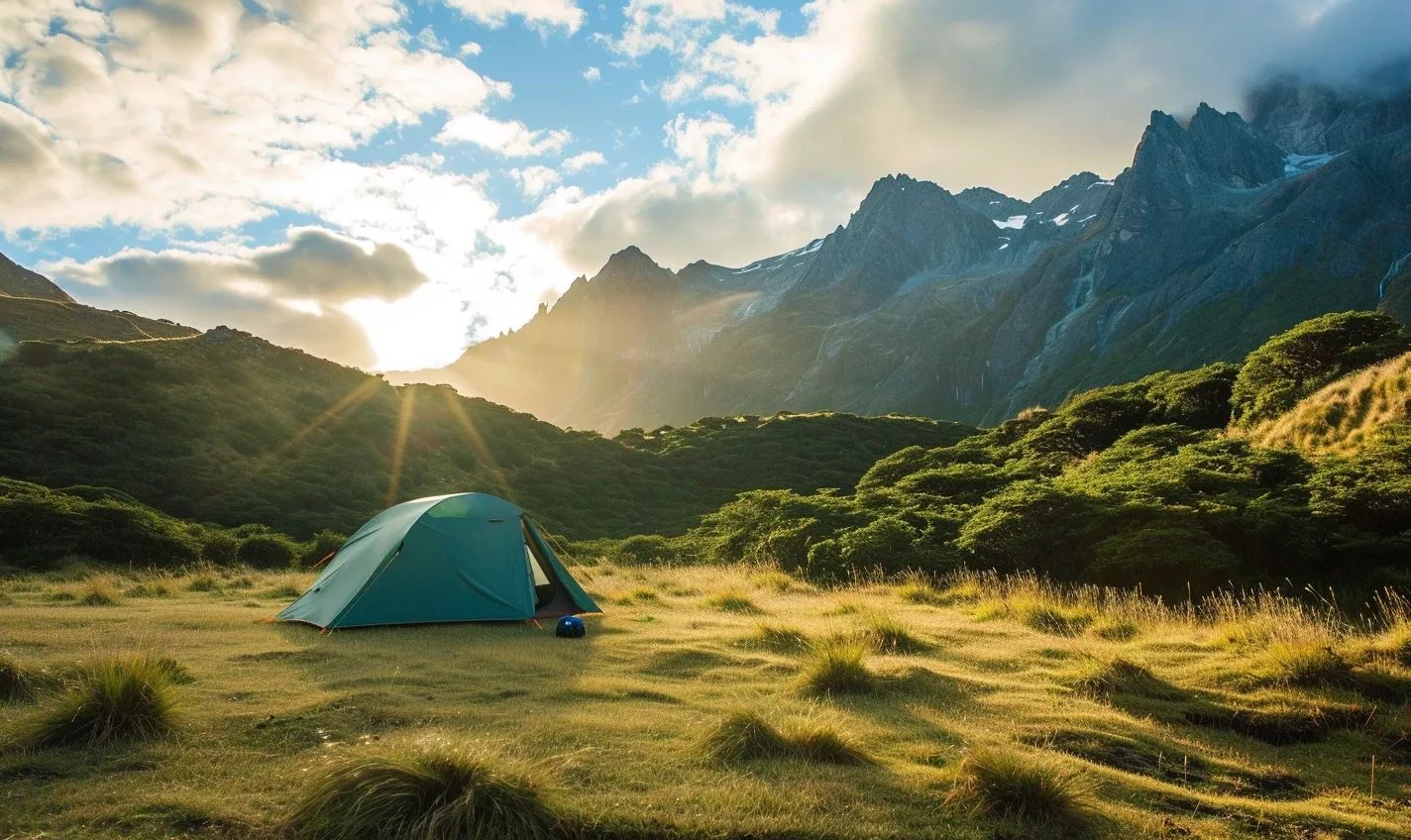
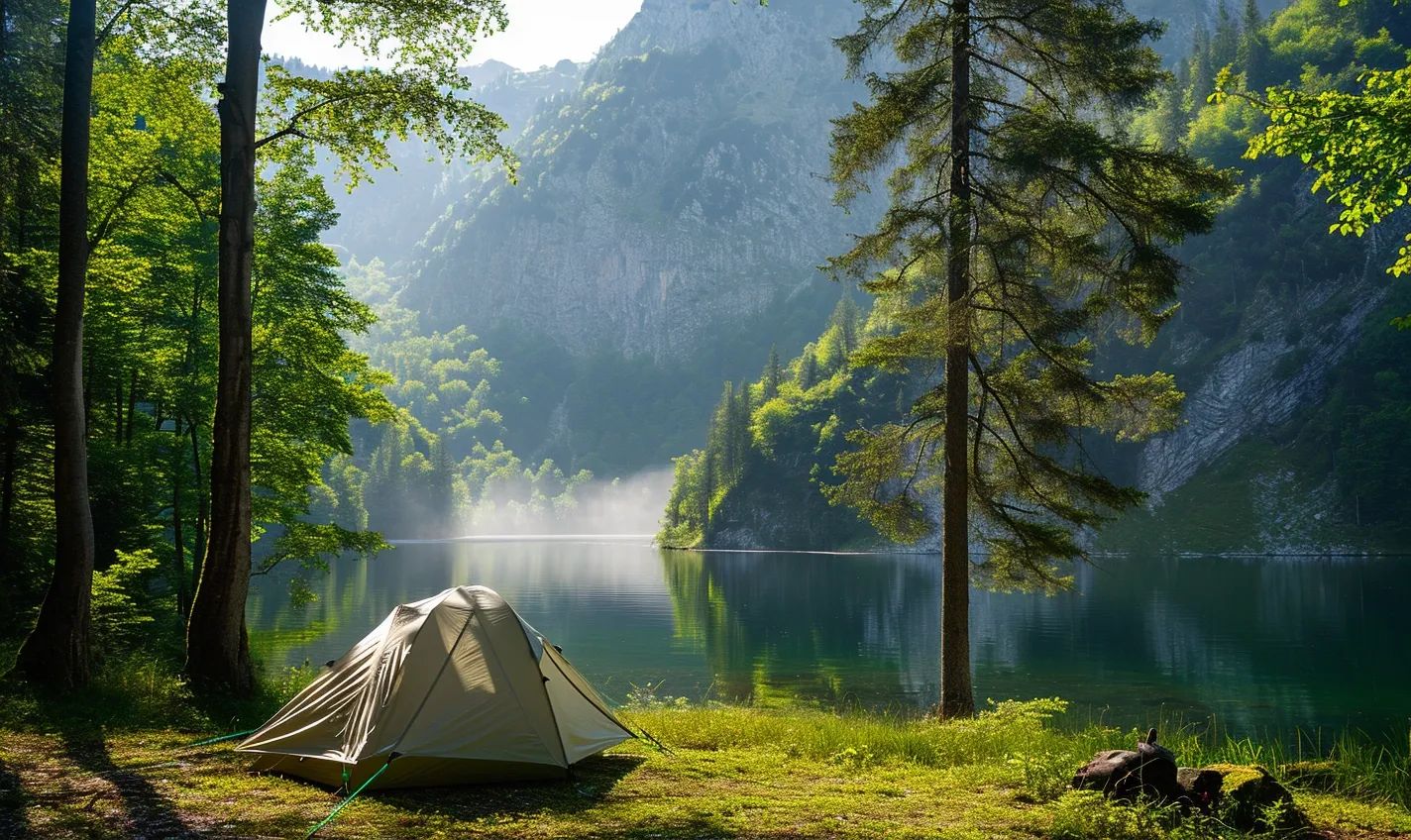
Regarding camping, being eco-friendly isn’t just about choosing a suitable campsite or following Leave No Trace principles. It also involves using eco-friendly camping gear and supplies. You can minimize your environmental impact and leave a positive footprint by making conscious choices with your equipment and supplies. Here are some tips to help you in selecting eco-friendly camping gear and supplies:
Opt for Sustainable Materials
Look for gear and supplies from sustainable materials such as organic cotton, bamboo, recycled polyester, or hemp. These materials have a lower environmental impact and are often more durable, ensuring you can use them for many upcoming camping trips.
Avoid Single-Use Items
Single-use items generate a lot of waste, so try to avoid them as much as possible. Instead of disposable plates and cutlery, opt for reusable alternatives like stainless steel or bamboo utensils. Carry a reusable water bottle and invest in a water filter to avoid purchasing bottled water during your camping trip.
Choose Energy-Efficient Lighting
Switch to energy-efficient lighting options, such as LED lanterns or solar-powered lights. These alternatives consume less energy and often provide a brighter light, saving money and resources. Remember to bring rechargeable batteries and a solar charger to power your electronic devices.
Pack Light and Compact
When selecting camping gear, choose lightweight and compact options. This makes it easier to carry your supplies and reduces your carbon footprint by requiring less fuel for transportation. Look for gear that packs down small and consider multipurpose items that serve multiple functions.
Support Sustainable Brands
Do your research and support outdoor brands that prioritize sustainability. Look for companies that use eco-friendly manufacturing processes, prioritize fair labor practices, and give back to environmental causes. Supporting these brands encourages the camping industry to become more environmentally conscious.
By making these small changes in your camping gear and supplies, you can contribute to a more eco-friendly camping experience. Remember, every little step counts in protecting the environment and preserving our beautiful natural spaces for generations.
Conclusion
So there you have it – a comprehensive guide to eco-friendly camping and selecting campsites with minimal impact. You can become a responsible and environmentally conscious camper by incorporating these tips and practices into your camping adventures.
Remember the key takeaways:
- Choose an eco-friendly campsite that aligns with your values
- Research and consider the environmental impact of campgrounds and parks
- Opt for less crowded campsites to preserve the natural beauty and tranquility
- Respect wildlife and natural resources by observing from a distance
- Follow Leave No Trace principles to minimize your footprint
- Invest in eco-friendly camping gear and supplies to reduce waste
Camping is a beautiful way to reconnect with nature and enjoy the outdoors. However, it’s important to remember that our actions can have a lasting impact on the environment. By adopting eco-friendly camping practices, we can help preserve the beauty of our natural landscapes for future generations to enjoy.
So, the next time you embark on a camping trip, challenge yourself to make sustainable choices. Take a moment to truly appreciate the beauty around you and ask yourself, “How can I leave this place better than I found it?”
By being mindful of our surroundings and minimizing our impact, we can ensure that our camping experiences are enjoyable and sustainable. Let’s all do our part to protect and preserve the environment while enjoying the wonders of camping.
Conclusion
In conclusion, eco-friendly camping is all about minimizing our environmental impact while enjoying nature’s beauty. By strategically selecting campsites, we can ensure we leave minimal impact on the surrounding ecosystem. It is essential to choose campsites designated and authorized by the relevant authorities, as they have already been assessed for their ecological impact. Additionally, considering factors like the availability of water sources, waste management facilities, and local regulations can further reduce our environmental impact. Remember to practice Leave No Trace principles and leave the campsite in better condition than we found. By being mindful and responsible campers, we can continue enjoying nature’s wonders while preserving them for future generations.
Frequently Asked Questions (FAQs)
What is eco-friendly camping?
Eco-friendly camping, or Leave No Trace, refers to minimizing your environmental impact while enjoying outdoor activities. It involves preserving natural resources, reducing waste, and leaving the campsite pristine.
How do I select an eco-friendly campsite?
When selecting an eco-friendly campsite, consider establishing campsites with designated areas for tent pitching and campfires. Look for campsites with proper waste disposal facilities and clean water sources.
What are some minimal-impact camping practices?
Minimal-impact camping practices include packing trash, using biodegradable soap when necessary, keeping noise levels down, refraining from picking or damaging plants and wildlife, and leaving the campsite as you found it.
Are there any eco-friendly camping gear options?
Yes, there are eco-friendly camping gear options available. Look for gear made from sustainable materials such as recycled polyester or organic cotton. Additionally, opt for gear that is durable and long-lasting to reduce waste.
How can I reduce my energy consumption while camping?
You use energy-efficient LED lights instead of traditional bulbs to reduce energy consumption while camping. Minimize the use of electronics and rely on natural lighting as much as possible. Also, consider using solar-powered chargers for your devices.
What should I do with my waste while camping?
Pack all your trash and dispose of it properly in designated waste receptacles. Avoid leaving rubbish or food waste behind, as it can harm wildlife and disrupt the ecosystem’s natural balance.










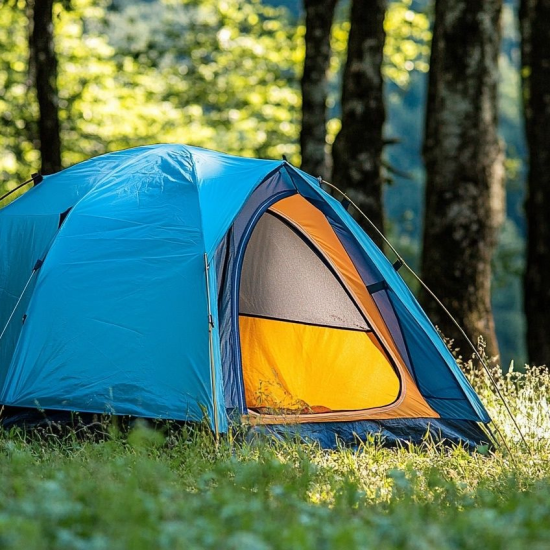
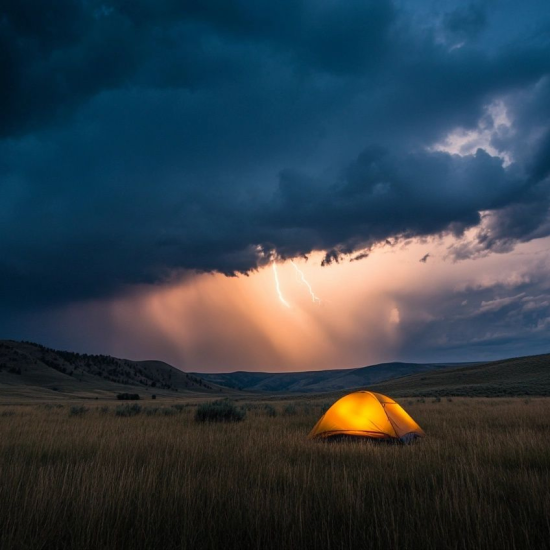
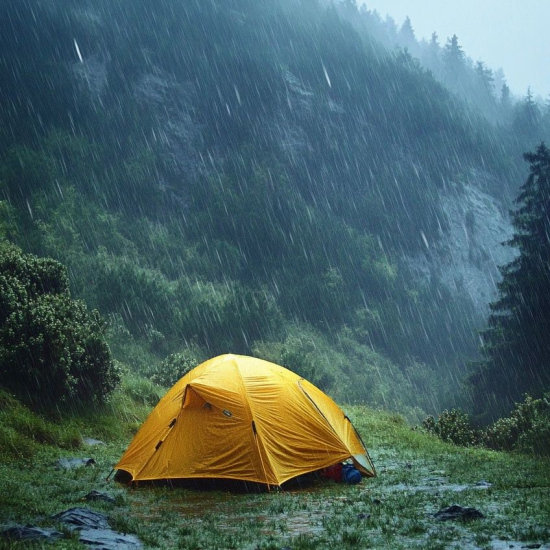
No Comment! Be the first one.